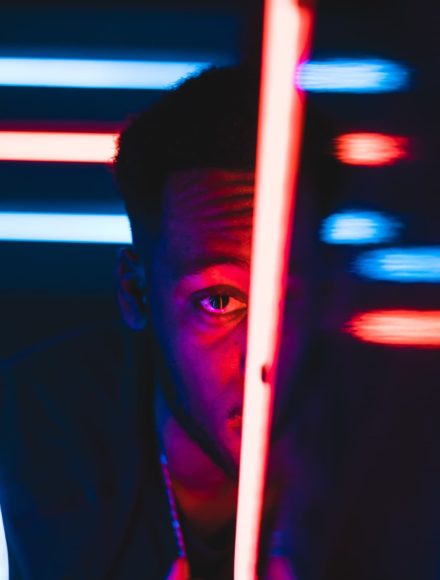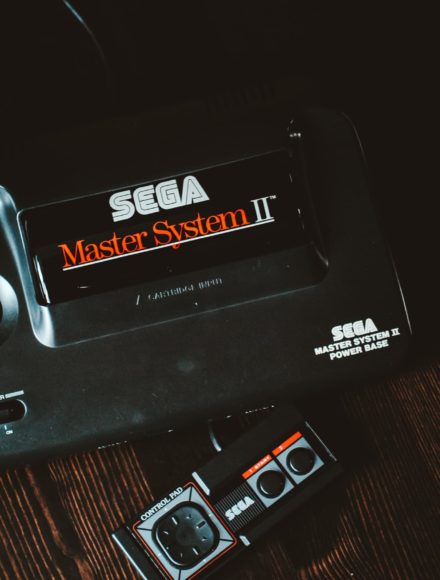Breaking down the world and war of Altered Carbon season 2

It’s been two years since the release of Altered Carbon’s first season. That story, with its own dictionary-filling vocabulary of cyberpunk terms, an unrelenting sense of setting, and immense world-building, was a lot to take in. And that’s before you even got to the season-spanning whodunnit mystery.
Season 2, out now on Netflix, again drops viewers right into the middle of a messy conflict: a war on a distant planet. Given the two years that have passed in the real world, the 30 years that have passed in the show’s timeline, and the change of setting, you’d be forgiven for being a little lost.
So let’s talk about the war at the heart of Altered Carbon’s season 2.
[Ed. note: This piece contains minor spoilers for the first two episodes of Altered Carbon season 2.]
On stacks, sleeves, elders, and meths
Altered Carbon is a particularly dense series. It’s full of barely explained jargon, initialisms, and history. The density and the world-building go hand-in-hand, though. It’s also something showrunner Alison Schapker is very aware of.
”[Density] is always the challenge,” she tells Polygon. “To me that is the challenge, and the fun, and the mandate: How do you tell a story in sci-fi that is both intellectually stimulating and thought provoking and makes you question our present by examining the possible future and not dumb it down? And at the same time, make it available to people emotionally, and being in a plot that you’re you’re caught up in and that you’re not kept at a distance from, so you can go on the ride and have the joy of being caught up with characters that you love and understand their motivations, and root for or root against. Like any drama gets swept up in the narrative. And at the same time, hopefully find yourself thinking about larger questions. So yes, that’s something we actively work to achieve.”
While season 1 did a strong job of establishing the lexicon of this universe — with its stacks, sleeves, DHF, and p-frags — season 2 starts off similarly vague, but ready to put the pieces in place.
:no_upscale()/cdn.vox-cdn.com/uploads/chorus_asset/file/19754758/Altered_Carbon_season_2_Anthony_Mackie_Takeshi_Covacs.jpg)
Image: Diyah Pera/Netflix
Right from the beginning, we’re introduced to an ongoing war on a distant planet. Our hero, Takeshi Kovacs (now played by Anthony Mackie), finds himself in the thick of the conflict, but not the fight. Season 2 focuses mostly on what’s happening outside of the battlefield in the politics and power plays of the ruling class. But what is that larger war actually all about?
The roots of the war at the heart of Altered Carbon season 2 start roughly 400 years before the show takes place — and also form the premise for the show’s entire universe. It begins when a colony ship from Earth made a long, sub-lightspeed journey to a new planet. That planet became known as Harlan’s World, named after one of the first colonists. On that planet, humans found the remains of a long-dead alien civilization called the Elders.
Using a unique alloy from Elder artifacts, humans created cortical stacks — think of them like hard drives for the human brain (which is called Digital Human Freight or DHF in the show) and personality. Stacks allow humans to implant their mind into any sleeve (body).
While everyone receives a stack at one year old, obtaining or growing a new sleeve is expensive, and quickly became a trend reserved only for the wealthy. This undying ruling class are called meths — named after the millenium-old Methuselah from religious texts. Unbound from aging, death, and the limits of a human lifespan, these effectively-immortal wealthy become hyperrich and increasingly decadent.
Enter Quellcrist Falconer
Who is Quellcrist Falconer?
Quellcrist “Quell” Falconer was an early colonist on Harlan’s World. By studying the Elder alloy, she invented the cortical stack and effectively birthed the new quasi-immortal human race.
:no_upscale()/cdn.vox-cdn.com/uploads/chorus_asset/file/19754759/Altered_Carbon_season_w_Rene_e_Elise_Goldsberry_Quellcrist_Falconer.jpg)
Image: Diyah Pera/Netflix
But she soon came to see that removing death from the human condition was creating something that was no longer recognizable as human. From the unimaginable wealth gap to disposable-body-inspired depravity to novel forms of torture, her creation had been twisted into something unrecognizable. So she decided to undo her work.
The Quellist Uprising
In speaking out against the worst parts of human immortality, Quellcrist Falconer started gaining followers. Quellism became something that sat somewhere between a religion, a cult, and a political movement.
We see this in flashbacks during season 1. Quell and her Envoys (effectively, sleeve-jumping warrior-mystics) want to infect the entire stack system with a virus that will re-limit the human lifespan to about 100 years.
The meth ruling class and their government, the UN Protectorate that covers Earth and all off-world colonies, don’t like that idea at all. They send their special forces (the Colonial Tactical Assault Corp or CTAC) to stop the rebellion. CTAC is successful, and finally ends the Uprising during the Battle of Stronghold, which we see in season 1. Quellcrist is believed to have been killed in the fight.
But her beliefs lived on.
The war (and plot) in season 2
Quell and her Envoys might’ve been defeated 300ish years ago, but the Quellist movement is alive and well in season 2. On Harlan’s World, where it all started, this renewed Quellist rebellion is led by Joshua Kemp.
The second season of Altered Carbon is set against the backdrop of this reinvigorated war, even though we don’t see much of it. We see the Quellists, and we see the eponymous Harlans and their ruling class of meths, but the actual fighting is largely only implied.
And that’s intentional. As Alison Schapker told Polygon, they sought to explore “the idea that there was a war taking place, but it was taking place largely at a distance, and that it could be manipulated for political purposes. So the idea that there’s economics to war, there’s political jockeying around war, that’s something we wanted to explore. It’s something science fiction is particularly good at exploring.”
—
Jeffrey Parkin
Polygon





